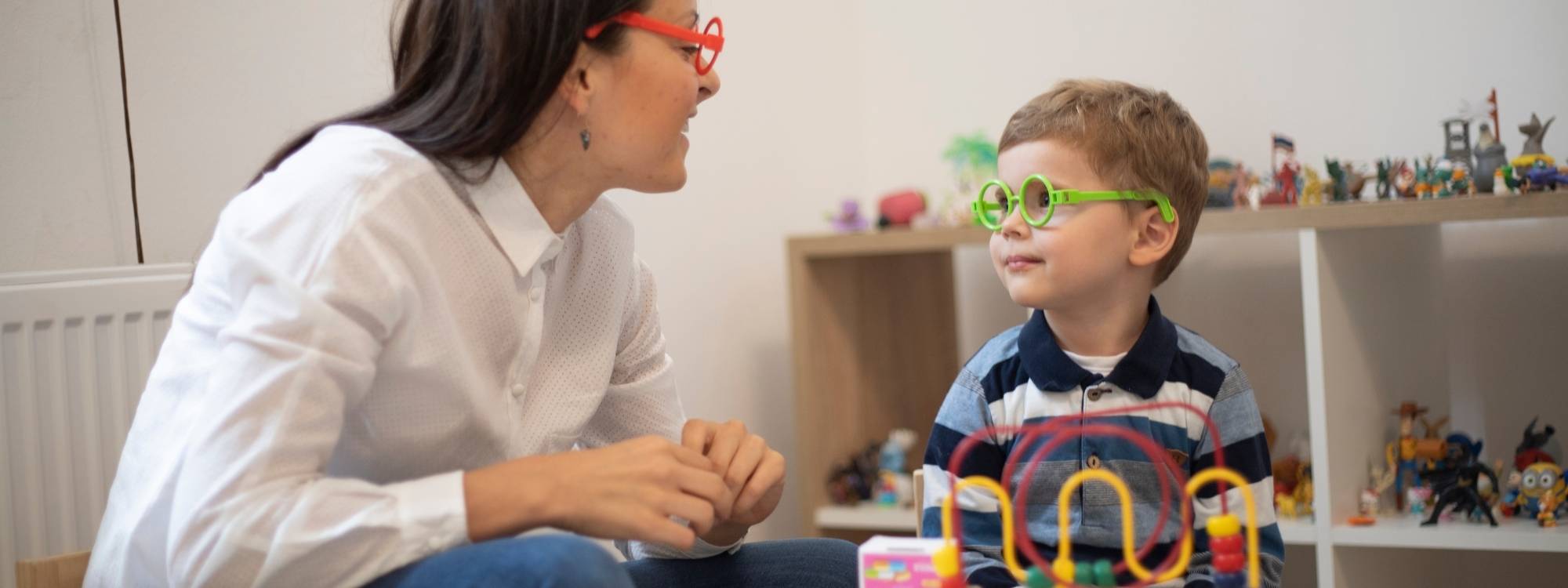How to Discipline a Child with Autism Effectively
Introduction to Autism Spectrum Disorder
Autism spectrum disorder (ASD) is a neurodevelopmental condition that affects how a child communicates, processes sensory input, and interacts with other children. Because children on the autism spectrum experience the world differently, they often struggle with emotional regulation, transitions, and understanding social cues. As a result, traditional discipline techniques that work for neurotypical children may not be effective or may even backfire when used with an autistic child.
Understanding how to discipline a child with autism starts with shifting the mindset from punishment to guidance. Discipline, in this context, means teaching positive behavior, setting clear expectations, and helping the child develop coping and communication skills. With more patience, structure, and consistency, parents can respond to challenging behavior in a way that builds trust, reinforces progress, and supports their child’s long-term emotional and behavioral development.
Understanding the Autistic Child
Autistic children often have difficulty understanding social cues, managing sensory input, and expressing emotions. What may appear as inappropriate behavior or defiance could be a response to confusion, overstimulation, or unmet needs. Unlike neurotypical children, those on the autism spectrum may struggle with interpreting consequences the same way, making traditional discipline methods like time-outs or verbal reprimands less effective.
Challenging behavior is frequently the result of a breakdown in communication or an attempt to gain control in an overwhelming environment. By observing patterns in a child’s behavior and identifying triggers, parents can develop a clearer understanding of what the child is trying to communicate. This empathy-based approach lays the groundwork for effective, structured discipline strategies that focus on support rather than control.
Discipline Strategies for Autistic Children
Disciplining autistic children involves teaching desired behavior through structure, support, and compassion, while also addressing any negative behavior. The focus should always be on helping the child learn how to navigate the world, rather than punishing them for struggling with it.
Some effective discipline strategies include:
- Positive reinforcement: Praise or reward systems help reinforce good behavior. Focus on catching the child doing something right.
- Visual supports: Tools like picture schedules, behavior charts, and social stories help communicate expectations.
- Modeling behavior: Demonstrating calm communication and emotional regulation helps the child learn by example.
- Predictable routines: Consistency in daily routines provides a sense of security and reduces anxiety.
- Natural consequences: Allowing the child to experience the result of their action (in a safe, controlled way) helps them make connections.
Parents should avoid physical or verbal punishment, which can cause confusion, fear, or emotional withdrawal, especially if the behavior is attention-seeking. Instead, discipline should be viewed as a way to teach new skills and support behavioral development over time.
ABA Therapy
Applied Behavior Analysis (ABA) therapy is one of the most evidence-based approaches for helping children with autism develop communication, self-regulation, and social skills. ABA focuses on understanding how behavior works, how the environment affects behavior, and how learning takes place.
Key principles of ABA that support discipline include:
- Positive reinforcement: Rewarding desired behaviors to increase their frequency.
- Task analysis: Breaking complex tasks into small, teachable steps.
- Data-driven adjustments: Therapists track progress and modify strategies as needed.
ABA therapy can be highly customized to a child’s needs and can take place at home or in a clinical setting. For parents, working with an ABA provider allows for collaborative planning of discipline strategies and ensures techniques are consistent across environments.
Clear Expectations
Children on the autism spectrum thrive in environments that are structured and predictable. One of the best ways to promote appropriate behavior is by establishing clear, consistent expectations.
To help a child understand and meet expectations:
- Use visual aids like charts or illustrated rules that outline behavior expectations step by step.
- Offer simple, direct instructions, and avoid sarcasm or figurative language that may be misinterpreted.
- Provide positive feedback immediately when expectations are met.
Consistency is crucial. Whether the child is at home, in school, or in therapy, everyone involved should use the same language, consequences, and reinforcers to avoid confusion.
Managing the Child’s Behavior
Managing behavior in autistic children requires a proactive and preventative approach. This means anticipating potential problems and reducing triggers before they escalate into meltdowns or aggression.
Some strategies to manage challenging behavior include:
- Understand sensory sensitivities: Loud noises, bright lights, or strong smells can lead to sensory overload and trigger unwanted behavior.
- Use calm-down techniques: Deep breathing, counting, or quiet spaces can help a child self-regulate.
- De-escalation tools: Gentle redirection, lowering your voice, or offering choices can prevent a situation from worsening.
It’s important to teach coping skills gradually, allowing the child to practice them in low-stress situations before expecting success during a crisis.
Autism Spectrum
The autism spectrum is wide and diverse. Some children may be minimally verbal and require high levels of support, while others may be articulate but struggle with social interactions or emotional regulation. Each child’s experience is unique.
Effective discipline strategies must be tailored to the child’s developmental level, communication style, and behavioral patterns. Rather than viewing autism as a condition to be “fixed,” families and providers should work together to help the child build confidence and resilience while celebrating their strengths.
Children with Autism
It’s important to remember that children with autism are not intentionally misbehaving. What looks like defiance may be a plea for help, a sign of distress, or a coping mechanism. Reframing behavior through this lens can shift the focus from punishment to problem-solving.
Patience, consistency, and empathy are the foundation of any successful discipline plan. The goal isn’t perfection, it’s progress. A child who feels supported is more likely to respond positively to guidance and develop skills that support long-term success.
Discipline a Child
When disciplining a child with autism, think of the process as coaching rather than correcting. Discipline should be firm yet gentle, and always rooted in the child’s best interest.
Key considerations:
- Avoid physical discipline and verbal punishment, which are often ineffective and damaging.
- Focus on teaching desired behavior instead of punishing unwanted behavior.
- Use natural and logical consequences to help the child understand cause and effect.
Working with professionals such as ABA therapists, psychologists, and educators, along with a service provider, ensures your approach is both effective and individualized.
Positive Reinforcement
Positive reinforcement is the foundation of many effective behavior strategies for autistic children. It involves rewarding behavior you want to see more of.
This could look like offering a favorite toy as a reward for positive behavior :
- Verbal praise: “Great job putting your toys away!”
- Tangible rewards: Stickers, small toys, or access to a favorite activity
- Social recognition: High fives, clapping, or celebratory routines
The key is to reward immediately and consistently, so the child connects the reward to the behavior. Over time, rewards can fade as the child internalizes the positive behavior.
Visual Aids and Schedules
Visual supports are incredibly helpful for autistic children who may struggle with verbal processing or transitions. By showing rather than telling, parents can communicate expectations in a way that reduces anxiety and increases cooperation.
Examples of visual aids include:
- Daily schedules: Show what activities will happen and when
- First-Then boards: Clarify what task must be completed before a reward or preferred activity
- Social stories: Describe a situation and appropriate behavior using pictures and simple text
Visual aids provide structure and predictability, which help children feel secure and prepared for what’s coming next.
Communication and Social Skills
Improving communication and social skills can significantly reduce challenging behavior. When children can express themselves effectively, they are less likely to act out in frustration.
Parents can support skill development by:
- Encouraging functional communication, such as using pictures, signs, or speech to request needs
- Practicing role-play scenarios to build social understanding
- Collaborating with speech and ABA therapists for structured programs
It’s important to celebrate small wins, remain patient, and to recognize the efforts made by the child. Social and communication skills develop over time and require repeated practice.
Collaboration with Professionals
Working with professionals provides parents with the support and strategies they need to help their child succeed. No one should have to navigate autism alone.
Professionals who can support discipline and behavioral goals include:
- ABA therapists: Specialists in behavior and reinforcement strategies
- Speech-language pathologists: Help with communication challenges
- Psychologists: Offer emotional and behavioral insights
Consistency across environments, home, school, and therapy, is key to helping a child generalize skills and succeed in everyday life.
Parental Support
Parents of autistic children face unique stressors and responsibilities. Supporting a child’s development starts with making sure caregivers are supported, too.
Self-care strategies may include:
- Joining support groups for parents of children with autism
- Taking breaks and practicing stress management techniques
- Seeking guidance from professionals and community resources
When parents feel confident and connected, they’re better equipped to create a calm, structured environment that promotes learning and emotional growth.
Conclusion
Disciplining a child with autism is not about punishment; it’s about parenting through teaching, supporting, and guiding them toward positive, meaningful behaviors. By understanding each child’s unique needs, using clear expectations, and collaborating with professionals, parents can foster growth, confidence, and long-term success.
Struggling to find the right way to discipline a child with autism? At Champions ABA, we understand that every child is different, and so is every discipline strategy. Our compassionate team offers personalized support through in-home ABA therapy, parent training, and expert guidance tailored to your child’s unique needs. Call (877) 242-1744 or visit our website to learn how we can help you create a calmer, more connected path forward.
FAQs
How do you discipline an autistic child who doesn’t listen?
To discipline an autistic child who doesn’t listen, start by identifying why the child is not responding and what problem behavior may be occurring. Often, it’s due to sensory overload, unmet needs, or lack of understanding. Use visual supports, repeat instructions calmly, and apply positive reinforcement to shape behavior over time.
How to deal with bad behavior in autism?
Managing bad behavior in autism requires a proactive, supportive approach to prevent issues such as self-harm. Identify triggers, provide structure, and use clear, consistent rules. Focus on reinforcing positive behavior and teaching replacement skills rather than reacting with punishment.
Can a child with autism be normal?
Children with autism are already whole and worthy. While they may face unique challenges, many children with autism lead happy, fulfilling lives. With support, they can reach their full potential without needing to be “normalized.”
How to control autism in kids?
Autism isn’t something to “control,” but rather to understand and support through ongoing research. Parents can help by building structure, using reinforcement, and teaching coping skills. Working with professionals like ABA therapists provides tools to support development and manage challenging behavior effectively.



